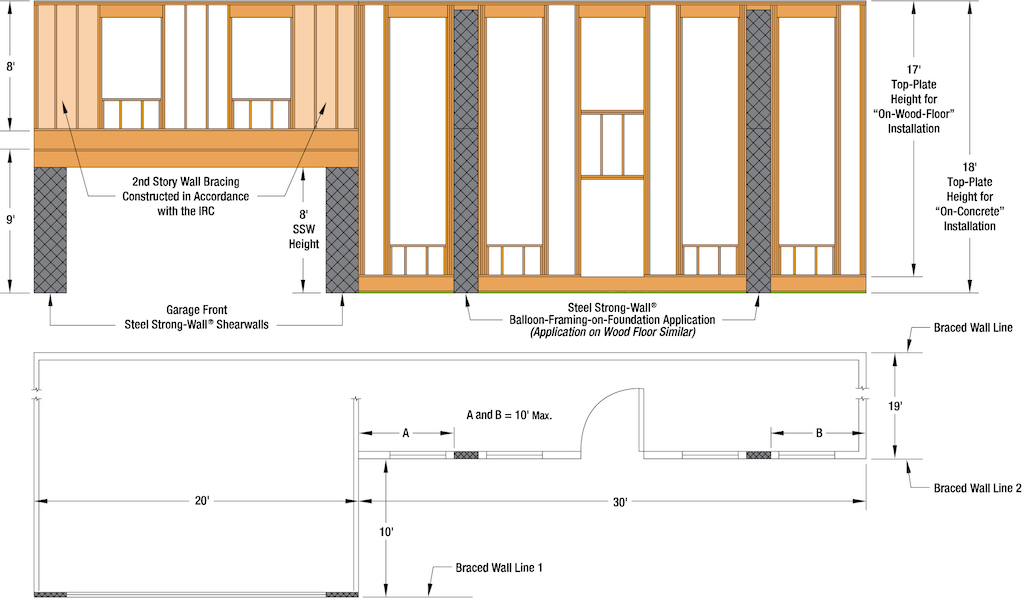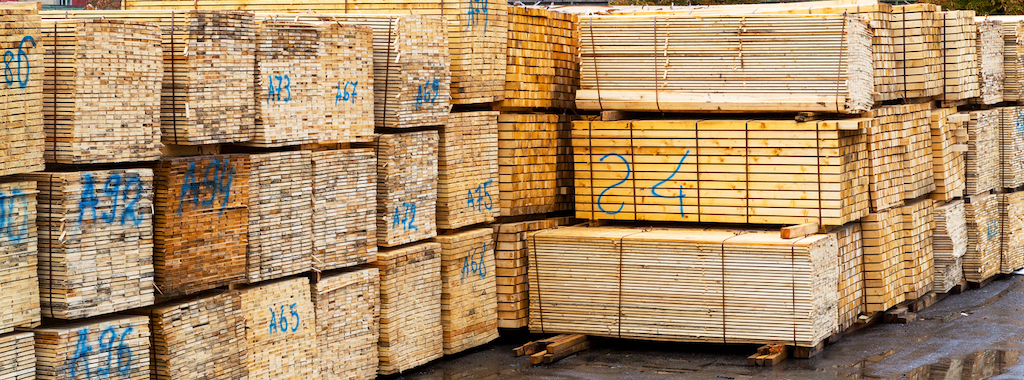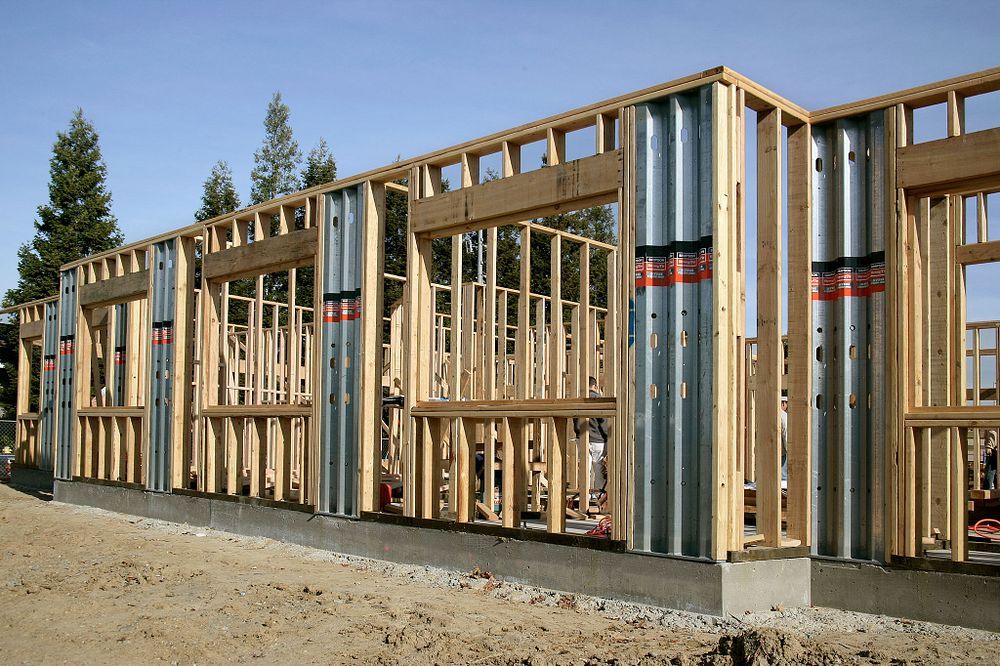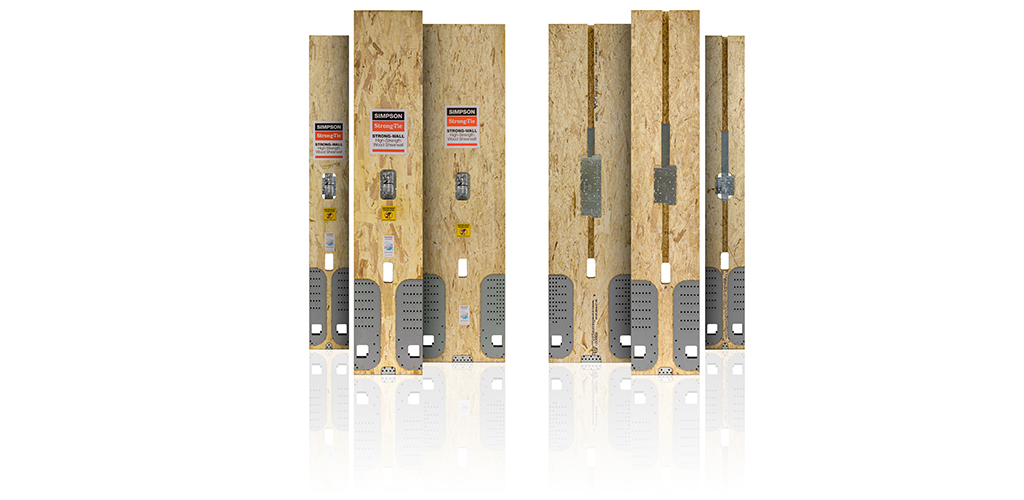As lumberyards continue to recover from pandemic-related supply issues, there’s been an ever-increasing shortage of building materials, creating many challenges for building contractors. These shortages have impacted availability of wood structural panel sheathing and, as a result, our field engineers and sales team have received many questions about potential alternative solutions to meet the wall bracing provisions within the International Residential Code (IRC). Simpson Strong-Tie Branch Engineer Silvia Dyer has researched these provisions and compiled this useful information for our team. At Simpson Strong-Tie, customer service is one of our top priorities. Our engineering team is always available to discuss your wall bracing situations and to help you investigate unique wall bracing solutions. Read Silvia’s research and suggestions below.
Wall bracing is fundamental to preventing failures such as racking, sliding, and overturning from horizontal forces that a structure may encounter throughout its life. The most common forces are wind and seismic. The IRC has prescriptive wall bracing requirements and methods in section R602.10 to address lateral bracing including continuous and intermittent methods. Note that the code has specific requirements for each wall bracing method, and the length of braced wall panels vary depending on the method used. A designer may evaluate the following wall bracing methods as potential solutions when asked to reduce the amount of wood structural sheathing products in a project.
For all the methods in the code, including those mentioned below, you can use our Wall-Bracing Length Calculator to determine the minimum length of braced wall panels you would need on a braced wall line based on the method used. In addition, you can use our Strong-Wall® Bracing Selector to select one of our code-listed prefabricated shearwall products that meet the intent of the code while providing a narrow wall solution.
Code-Prescribed Wall Bracing
LIB (Let-in-bracing) Method
-
-
- Applicable to projects up to two stories high in low seismic regions.
- Panel heights up to 10′.
- The 1×4 wood can be replaced by Simpson Strong-Tie metal straps – WB/WBC/RCWB (see below).
- This method eliminates wood structural panel (WSP) sheathing; however, it requires gypsum wallboard installed on the side of the wall opposite the 1×4 or metal strap per section R602.10.4.3 with of 8″minimum edge fastener spacing for the gypsum board.
- Minimum full wall lengths per panel:
o 55″ for 8′ walls
o 62″ for 9′ walls
o 69″ for 10′ walls
-

-
-
- Simpson Strong-Tie WB/WBC/RCWB straps satisfy the “1×4 wood or approved metal strap” for the Let-in-bracing (Method LIB) in IRC Section R602.10.
- Our catalog and evaluation report ESR-2608 provide supporting information for these straps — see section 2.3 of ESR-2608. Method LIB is also shown in Detail 2 of detail sheet WBW1 in our wall bracing detail sheets. I provide them in pdf, dwg, and dfx format for your reference and use.
- Note that WB/WBC straps must be installed in pairs. RCWB must be let into a saw kerf cut in the studs.
-
WSP (Wood Structural Panel) Method
-
-
- Applicable to projects up to three stories high with no seismic region limit.
- Requires a 3/8″ wood structural panel (WSP), but the WSP doesn’t need to be placed continuously.
- Including gypsum on the opposite side of the WSP is optional; however, omitting it will increase the required length of bracing by 50% in seismic applications and 40% in wind applications.
- Panel heights up to 12′.
- Minimum full wall lengths per braced panel of:
o 48″ for up to 10′ walls
o 53″ for 11′ walls
o 58″ for 12′ walls
-

-
- Method WSP is also shown in Detail 1 of detail sheet WBW1 in our wall bracing detail sheets. I provide them in pdf, dwg, and dfx format for your reference and use.
Simpson Strong-Tie Wall Bracing Solutions
These solutions may be ideal for narrow wall segments or if you don’t have enough length of wall to meet the prescriptive requirements of the IRC:
Strong-Wall® Portal Frame System (PFS)
-
-
- All applications where the PFH — Portal Frame with Hold-downs — method can be used.
- For projects up to two stories high in SDC A-C.
o Garage Portal Application - SDC Do, D1, and D2 for single-story application.
o Garage Portal Application - No sheathing is required for the portal frame portion. Sheathing would be required if a pony wall is needed.
- Maximum opening height 10′ — and with a pony wall, up to 12′ total wall height.
- Minimum wall length of 10″ or 12″, with an equivalent of up to 8′ feet of braced wall panel length.
- Post-installed anchor solutions.
- Use either sawn lumber or LVL to build the frame onsite. (The only part Simpson Strong-Tie provides is the holdown and straps.)
- Our literature and evaluation report ESR-4455 provide supporting information for this portal frame.
-

You can use our Strong-Wall® Bracing Selector to select the frame kit for your project
Steel Strong-Wall® Shearwall (SSW)
This solution can be used in the following applications:
-
-
- Can replace each alternative braced wall panel noted in the IRC or 4′ of wood structural panel sheathing (Method WSP of IRC). SDC A – D and up to the first of three stories.
o Garage portal application
o Balloon framing application
o Standard framing application
o Two-story stacked - No sheathing is required.
- Wall lengths of 12″, 15″, 18″, 21″, and 24″.
- It is 3 ½” in width so that it fits within a 2×4 wall.
- Post-installed solutions are available.
- Our literature and evaluation report ESR-1679 provide supporting information for this wall.
- Can replace each alternative braced wall panel noted in the IRC or 4′ of wood structural panel sheathing (Method WSP of IRC). SDC A – D and up to the first of three stories.
-
You can use our Strong-Wall® Bracing Selector to select the Steel Strong-Wall® kit for your project.
High-Strength Wood Strong-Wall® Shearwall (WSWH)
This solution can be used in the following applications:
-
-
- Can replace each alternative braced wall panel noted in the IRC or 4′ of wood structural panel sheathing (Method WSP of IRC). SDC A – D and up to first of three stories.
o Garage portal application
o Balloon framing application
o Standard framing application - No sheathing is required.
- Wall lengths of 12″, 18″, and 24″.
- It is 3 ½” in width so that it fits within a 2×4 wall.
- It can be trimmed at the site.
- Rake wall application.
- Post-installed solutions are available.
- Heights up to 20′.
- Our literature and evaluation report ESR-2652 provide supporting information for this wall.
- Can replace each alternative braced wall panel noted in the IRC or 4′ of wood structural panel sheathing (Method WSP of IRC). SDC A – D and up to first of three stories.
-
You can use our Strong-Wall® Bracing Selector to select the WSWH kit for your project.
General Reminders Regarding Wall Bracing Code Requirements
- Note that the IRC requires minimum locations of wall bracing panels within a braced wall line — see Figure R602.10.2.2 of the IRC.
- If braced wall line is greater than 16′, it requires a minimum of two braced wall panels.
- All perimeter walls shall be part of a braced wall line.
Other Considerations
When an intermittent wall bracing method is used instead of a continuous sheathing bracing method, using foam plastic sheathing products such as Poly-ISO between wall bracing panels will allow residences to be more energy efficient.
Reference Links
IRC 2018
Simpson Strong-Tie Wall Bracing Details
Wall-Bracing Length Calculator
Strong-Wall® Bracing Selector
Wall Bracing Technical Bulletin
The following links will bring up PDFs with summaries of the different IRC 2018 Wall Bracing methods and general requirements.
Wall Bracing Methods – 2018 IRC
Minimum and Effective Lengths 2018 IRC
I hope you find this information useful. If you have questions, please contact your Simpson Strong-Tie territory representative. If you don’t know your territory representative, please call us at 1-800-999-5099. I’m certain we can work together to come up with a solution during this interesting time.





